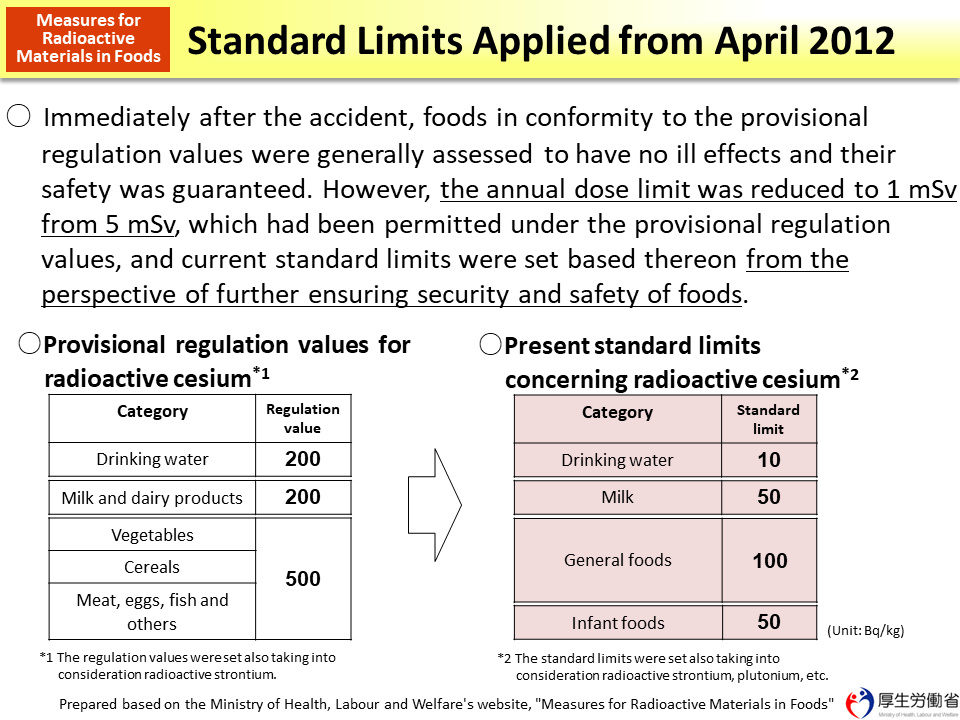Standard Limits Applied from April 2012
Even based on the provisional regulation values applied up to March 2012, safety of foods in conformity thereto was guaranteed in terms of the effects on human health. However, from the perspective of further ensuring the security and safety of foods, the current standard limits were established and have been applied since April 1, 2012.
First of all, the provisional regulation values were based on the premise that the annual radiation dose from foods does not exceed 5 mSv.
The present standard limits are based on the idea that the annual radiation dose from foods should not exceed 1 mSv. Additionally, foods were classified into five categories for the provisional regulation values, but were newly classified into four for the present standard limits. The standard limit for drinking water was set at 10 Bq/kg. The standard limit for milk, which children generally drink a lot of, was reduced to 50 Bq/kg. Additionally, a new category, "infant foods," was made for ensuring safety for infants and the standard limit therefor was set at 50 Bq/kg, the same as that for milk. The standard limit for other general foods is 100 Bq/kg. All foods other than infant foods were categorized as general foods based on the idea to minimize gaps in additional doses caused by differences in individuals' eating habits. The present standard limits are easier to understand for the general public and are also consistent with international views.
(Related to p.44 of Vol. 2, "Food Categories [Reference]," and p.47 of Vol. 2, "Approach for the Establishment of the Standard Limits ◆ Grounds for the Standard Limits")
- Included in this reference material on March 31, 2013
- Updated on January 18, 2016

